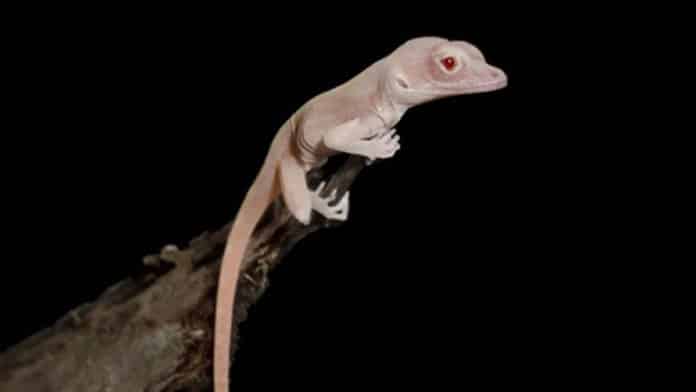CRISPR Edited Mutant Lizard
The world’s first CRISPR edited reptile the tiny albino lizards have been created by A team of scientists from the University of Georgia, U.S in a DNA breakthrough.
This method has previously been used to change the DNA of mammals, fish, birds, and amphibians – but this is the first time it has been used with reptiles. It was previously thought to be impossible to use the technique on reptiles because, unlike other animals, they fertilize their eggs at unpredictable times.

In a paper published in the Journal Cell Reports, Douglas B. Menke and his colleagues described how they made an albino version of the brown anole (Anolis sagrei), a species of lizard native to Cuba and the Bahamas. The creature, which is the size of a human index finger, was made using a controversial gene-editing technique called CRISPR-Cas9.
Scientists can use CRISPR Cas9 to edit a gene that is causing problems or insert a gene that is needed. The technique could lead to curing incurable diseases, extending human lifespan.
It was previously thought to be impossible to use the technique on reptiles. This was because, unlike other
animals, they fertilize their eggs at unpredictable times. At the same time, embryos are hard to transfer from a female lizard, making it more difficult to manipulate them in a lab as has been done with other animals.In this latest research, Scientists from the University of Georgia injected CRISPR reagents into unfertilized eggs in lizard ovaries for the first time. When the eggs hatched, about 50% of the mutant lizards had inherited edited genes on DNA from both their mothers and fathers.
This study proves that CRISPR components stay active for several days or even weeks within an unfertilized egg. Doug Menke, an associate professor at the University of Georgia and the lead author of the paper said that his team has been brainstorming on how to modify reptile genomes and manipulate genes in reptiles. Since scientists were injecting unfertilized eggs, they thought that they would only be able to perform gene editing using CRISPR Cas9 on the alleles inherited from the mother.
Scientists from the University of Georgia waited three months for the lizards to hatch. Between 6 and 9% of the oocytes produced offspring with gene-edited traits.
CRISPR Edited Mutant Lizard- Here’s A Short Video of the Procedure
Credits: Demonstration of Lizard Surgery and Oocyte Microinjection Procedure, Department of Cellular Biology, University of Georgia
Professor Doug Menke added that 6% of success rate seems to be low when scientists have managed to achieve efficiencies up to 80% or higher in the different model system. But none of the researchers has been able to do these sorts of manipulations in reptiles before.
Researchers decided to make the lizards albino because humans with albinism often have vision problems. Scientists hope to use the lizards to study how the loss of this gene affects the development of the retina.
The scientists now hope to use this gene-editing technique on other animals in a hope to discover more methods of gene editing using CRISPR Cas9 technique.






























